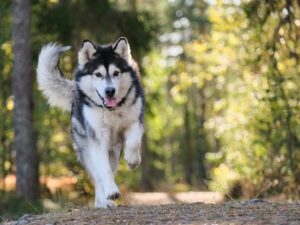Dog body language is a complex way dogs communicate. It helps them talk to each other and to us. By learning these cues, we can make our dogs happier and healthier. It’s all about understanding their signals, like how they bark, show their face and stand.
Getting to know dog body language is rewarding for dog owners. It lets us see what our dogs need and feel. We can then respond in the right way. This way, we build a stronger, loving bond with our dogs.
Key Takeaways
- Understanding dog body language can improve our relationships with our dogs
- Canine communication involves a range of signals, including vocalizations, facial expressions, and body postures
- Dog body language can help us recognize our dog’s needs, wants, and emotions
- Learning about dog body language can create a more harmonious and loving relationship with our dogs
- Dog body language is an essential part of canine communication
- Recognizing the different signals and cues that our dogs use to communicate can help us become better dog owners
Understanding the Basics of Dog Body Language
Understanding dog behavior starts with recognizing the role of body language. Dogs use body language to share their feelings, plans, and needs. It’s key for dog owners to learn these signals to care for their pets better.
Reading dog signals needs a deep understanding of the dog itself. A dog’s tail and ear movements can tell a lot about its mood and alertness. Knowing these cues helps us connect better with our dogs and avoid fights.
To get better at reading dog body language, consider the situation and the dog’s background. This includes where they are, who they’re with, and their past. A complete view helps us understand our dogs better and care for them more effectively.
Important parts of dog body language include:
- Posture and stance, which can show confidence or fear
- Facial expressions, which can show happiness or anxiety
- Vocalizations, which can signal excitement or distress
We can make our dogs happier and healthier by learning to recognize and understand these signals. It’s a journey that needs patience, observation, and practice.
Tail Positions and What They Really Mean
A dog’s tail is very expressive and tells us a lot about its mood. It shows a range of emotions and intentions. Knowing what different tail positions mean helps us understand our dog better and respond in the right way.
A wagging tail usually means a dog is happy or excited. But, the speed and how it wags can also show other feelings, like anxiety. A tucked tail, on the other hand, might mean a dog is scared or feeling insecure. It’s important to look at the situation to really understand what your dog is feeling.
Here are some common tail positions and what they might mean:
- A high, stiff tail can show confidence or boldness
- A low, relaxed tail means a dog is calm or happy
- A tail that wags fast can show too much excitement or hyperactivity
By noticing and reacting to these cues, we can build a stronger bond with our dogs. Always look at the whole picture, including ear movements and facial expressions. This helps us understand our dog’s feelings and needs better.
Facial Expressions and Ear Movements in Dogs
When it comes to reading dog movements, facial expressions and ear movements are key. A dog body language guide helps you understand what your dog is trying to say. By noticing these non-verbal signs, you can grasp your dog’s feelings and needs better.
A dog’s face can show many emotions, like happiness or fear. A calm dog has a soft mouth and raised eyebrows. But a stressed dog might have a tight mouth and low eyebrows. Ear positions also tell a lot, with up ears showing alertness and down ears showing calm.
Some important things to watch for when reading dog movements include:
- Eye contact: Direct eyes can mean confidence or aggression. Avoiding eyes can show fear or submission.
- Ear position: Forward ears show excitement or interest. Back or down ears show fear or anxiety.
- Mouth and tongue signals: A relaxed dog has a soft, open mouth. A stressed dog has a tight, closed mouth.
Understanding these signs helps you connect with your dog on a deeper level. Always check a dog body language guide for more on reading dog movements and getting to know your dog’s personality.
Reading Your Dog’s Body Postures and Movements
Understanding canine behavior interpretation is key to a strong bond with your dog. Recognizing dog body language helps you meet your dog’s needs. It’s important to read their body postures and movements.
Dogs show their feelings through body language. A fearful dog might have a low head, tucked tail, and avoid eye contact. But a confident dog will stand tall, look you straight in the eye, and have a relaxed tail.
To get better at dog body language, try these tips:
- Notice your dog’s ear positions and tail movements for clues about their mood.
- Look at their posture and how they move, like their walk.
- Spot small changes in behavior, like raised hackles or a tucked tail.
Improving your canine behavior interpretation skills makes your bond stronger. It leads to a happier, healthier life for your dog. Always be patient, understanding, and empathetic. If unsure, get professional help.
Common Misinterpretations of Dog Body Language
Understanding dog behavior is key, but it’s easy to get it wrong. Interpreting dog signals needs a deep grasp of how dogs communicate. This includes knowing the dog’s breed, life experiences, and individual traits. This knowledge helps us meet our dogs’ needs and give them the care they deserve.
It’s important to know the different types of dog body language. This includes aggressive, fearful, and submissive behaviors. Knowing this helps us avoid mistakes, like thinking fear is aggression or misreading cultural signals. For example, a dog showing its belly can be seen as weak, but it’s a sign of respect.
Some common mistakes in reading dog body language include:
- Mistaking a dog’s fear-based behavior for aggression
- Overlooking subtle signals, such as a dog’s ear position or tail language
- Attributing human emotions to canine behavior, rather than considering the dog’s unique perspective
By knowing these common mistakes and accurately interpreting dog signals, we can strengthen our bond with our dogs. This requires a commitment to understanding dog behavior and a willingness to learn and grow.
Summarizing some common dog body language cues and their meanings:
| Body Language | Meaning |
|---|---|
| Tail Wagging | Generally indicates happiness or excitement. The speed and height of the wag can provide more details. |
| Ears Up and Forward | Indicates attentiveness or curiosity. |
| Ears Flat or Back | Often shows fear, submission, or nervousness. |
| Growling or Snarling | A sign of aggression, warning, or discomfort. |
| Play Bow | An invitation to play. The dog’s front end is lowered, and their rear end is up. |
| Raised Hackles | Indicates arousal, which can be due to excitement, fear, or aggression. |
| Panting | Could mean the dog is hot, tired, or stressed. |
| Relaxed Posture | Indicates the dog is calm and comfortable. |
| Cowering or Hiding | A sign of fear or submission. |
| Showing Teeth | Warning sign that the dog might bite if provoked. |
| Rolling onto Back | Can be a sign of submission, but sometimes indicates the dog is relaxed and trusts their owner. |
Understanding these cues can help you better communicate with and understand your dog. Do you have a dog of your own? 😊
FAQ
What is dog body language and why is it important?
Dog body language is a way dogs communicate with each other and us. It’s key to understanding their needs, feelings, and plans. This knowledge helps us build stronger bonds with our dogs.
How can I interpret different tail positions in dogs?
Tail positions tell a lot about a dog’s mood. A wagging tail shows happiness or excitement. But a tucked tail might mean fear or submission. Knowing these signs helps us understand our dogs better.
What do different facial expressions and ear movements in dogs mean?
Dogs also use their faces and ears to communicate. Forward ears show alertness or curiosity. But a furrowed brow or squinting eyes might mean they’re stressed or uncomfortable. Spotting these signs helps us know how our dogs are feeling.
How can I identify common misinterpretations of dog body language?
Myths and misconceptions can confuse us about dog behavior. For instance, a wagging tail doesn’t always mean a dog is friendly. And a growl doesn’t always mean aggression. Knowing the real meanings behind these signs helps us respond better to our dogs.
What are some tips for becoming fluent in my dog’s communication style?
To understand your dog’s language, watch them closely and learn about body language. Respond to their signals with empathy and understanding. Engage with your dog regularly, seek training, and stay open-minded to become a better communicator.
Conclusion: Becoming Fluent in Your Dog’s Communication Style
Dog body language is a complex way for dogs to talk to us. It helps us connect with them on a deeper level. By learning their language, we can better understand and meet their needs.
Reading your dog’s body language is a skill worth learning. It involves noticing their tail, face, and behavior. With practice, we can strengthen our bond with our dogs.
Start by watching your dog closely and learning their signals. Always try to understand them with empathy. This way, you’ll not only grow closer to your dog but also become a more caring pet parent.






Pingback: Dog Tail Wagging: Why Do Dogs Wag Their Tails? - woofytips